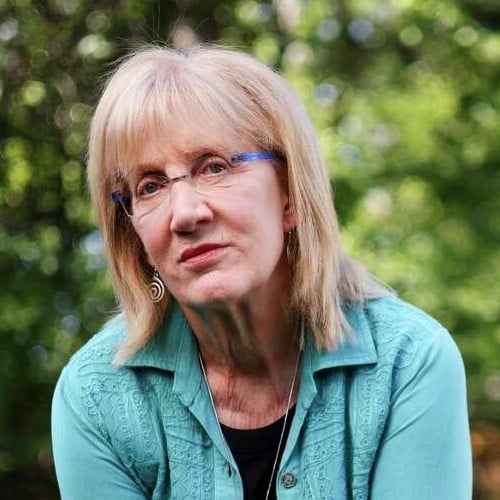ustxtxb_obs_1971_03_26_50_00008-00000_000.pdf
Page 4
much as is possible; otherwise, it will face a court mandate to do the job of redistricting again. The achievement of mathematical equality, however, should not be confused with the establishment of districts which reflect fairness or equality The outlook for that achievement is independent of court action. Among major election code reforms which will be considered but upon which creating single-member legislative districts, the. primary elections from Spring to late Summer. Single -Member Districts Texas is one of few states which have a combination of single-member districts, county-wide multi-member districts and multi-member districts based on congressional districts. A number of states, however, do have some form of multi-member legislative districts. A multi-member district is one in which two or more representatives are elected from the same district by the same electorate. For example, Dallas County has 15 members in the present House of Representatives, all of whom are elected at-large in the county with all voters able to vote for candidates for all 15 places. This multi-member district scheme has been challenged in court in Texas and elsewhere as denying representation to significant ethnic and political minorities. Among the Dallas delegation, for example, there is one Negro and only one 8 The Texas Observer Bound Volumes of The Observer Bound volumes of the 1970 issues of the Texas Observer are now ready. In maroon washable binding the same as in recent years the price is $12. Also available at $12 each year are volumes for the years 1963 through 1969. Texas residents please add the 4Y4% state and city sales tax to your order. Volumes will be sent postpaid. THE TEXAS OBSERVER 504 W 24th AUSTIN 78705 Republican, yet Republicans received 46.4% of the combined vote in contested legislative elections in Dallas County. Informed legislators are awaiting with interest the U.S. Supreme Court’s decision in the case of Chavis v. Whitcomb, an Indiana case challenging multi-member legislative districts. The court’s decision should be announced in time for the Legislature to take appropriate action. If the Supreme Court declares multi-member districts unconstitutional per se, or unconstitutional if they deny representation to political or ethnic minorities, then the Legislature can be expected to make adjustments in Texas. If the Supreme Court does not decide against multi-member districts, then sentiment to eliminate them will not be strong enough to carry a bill successfully through the Legislature. Should the court rule against multi-member districts only in cases where it can be demonstrated that they deny representation to minorities, the outlook for Texas is that multi-member districts will be retained in those counties where the legislative delegation wants them retained. The number of districts will be increased, however, and as a result will more nearly reflect the ethnic and political make-up of the county than the present system. For example, rather than having one district with 15 members, as in the present case of Dallas, the. Legislature might create within the county five districts with three members each. It could be argued that this course of action would grant relief to the affected minorities. Such a course of action, however, is certain to invite litigation. The Legislature’s hesitance to move away from multi-member districts is understandable since conservative Democrats will be the losers in such a change. Republicans and liberal Democrats stand to make significant gains, even if the smaller multi-member districts are established. 18-Year -Old Vote The Supreme Court’s recent decisions upholding the 18-year old vote for federal elections but leaving the voting age for state elections as a matter for state regulation has created an awkward problem in Texas, as well as in most other states. Unless the Legislature proposes a constitutional amendment to the voters this year which the voters, in turn, ratify, then Texas will have a dual ballot system for the elections in 1972: one for 18-20 year olds and another for those 21 and older. A dual ballot system is expected to create administrative and voter confusion and to result in increased expenses in holding the election and delayed reporting of election results. Both houses of the Legislature have active supporters of the movement to lower the state voting age to 18. Sen. Joe their respective houses. Prospects for getting a constitutional amendment submitted to the voters are fairly good, but not certain. As one crucial committee chairman put it, “As of now I haven’t felt any real surge of feeling to pass it.” The 18-year-old vote has added 595,000 people to the pool of potential voters for federal elections. It is doubtful that entrenched state officials are anxious to see those voters added to the pool of potential state voters, despite the fact that fewer than 400,000 would likely register and probably no more than 200,000 would vote in 1972. Yet the pressures brought on by eligibility for federal elections and the expected confusion and extra cost of administering a dual ballot system will probably sway many legislators who opposed the 18-year-old vote in previous sessions. Despite stiff opposition, the amendment will likely to approved by the Legislature and will be submitted to voters for their approval in a special election this Fall. Changing the Primary Date The May primary in Texas is one of the earliest in the nation. True to Texas political history, the reason for the May date is a story of interest. Laying plans for his upcoming presidential campaign, Lyndon Johnson wanted his Senate . renomination out of the way before the 1960 Democratic National Convention. He prevailed upon the Legislature, which willingly obliged, to move the primary to May to enable him to have more post-primary, pre-convention campaign time.. They moved it, and it stayed moved. Advocates of the late summer primary say it has the advantage of reducing the lengthy campaign period, gives the primary campaign continuity with the November general election campaign, helps increase voter interest and helps reduce skyrocketing campaign expenditures. Two sets of dates are most commonly mentioned for the primary and runoff, August and September versus September and October. Secretary of State Martin Dies is a strong advocate of moving the primary date and favors the September-October formula. At periodic intervals, surges of interest in moving the primary to late summer have peaked arid ebbed in the Legislature. There seems to be movement toward a small peak of interest in the 62nd Legislature. However, when State Rep. Russell Cummings of Houston was defeated for re-election, the Legislature lost one of its staunchest supporters of revising the primary date. At present there is no acknowledged champion of the cause in either house, although the issue will come up and will likely be given serious consideration.


